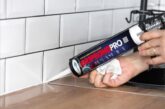
Antony Corbett, product applications engineer at Geberit, explains the benefit of challenging traditional methods of construction in a competitive landscape.
With increased pressure on budgets and timescales, it has never been more important for project teams to work smarter, more easily and more quickly. New ways of working will always drive benefits for project teams and, with continued development from manufacturers, there are efficiencies to be found across all areas of construction. Whether new materials or pre-built systems, we are constantly finding examples where swapping out traditional methods of construction at the specification phase can deliver significant benefits for site teams.
Let’s examine three areas where manufacturers are supporting specifiers and building designers (not to mention others in the value chain) to ensure quicker and smarter delivery of bathroom and piping projects, without compromising on cost or quality.
Embrace alternative materials
One of the most effective ways to drive efficiencies is to embrace new materials, and there is no better demonstration of this than in piping systems.
For many years copper was the piping material of choice for drinking water and heating systems, offering strength and durability. But with fluctuating costs and little flexibility, project teams have increasingly turned to plastic piping over the last 10-15 years, thanks in part to its bendable construction and flame-free pipe jointing.
However, there is another solution which is proving popular thanks to its unique combination of strength and stability (as with metal piping systems) alongside flexibility and corrosion resistance (like plastic), all with the added convenience of enhanced jointing methods; press-fit multi-layer piping.
Flexible yet durable, multi-layer piping systems like Geberit’s new FlowFit system consist of three layers. An outer plastic layer made of polyethylene (PE-RT of the second generation) which protects against corrosion and mechanical damage, a central aluminium layer which makes the pipe stable yet bendable, plus an inner layer, which is also made of PE-RT, for internal corrosion resistance.
The technology has often been used for industrial applications, but it also offers a single solution for all potable water and heating supplies on both domestic and non-domestic projects. The central-welded aluminium layer offers mechanical stability to ensure that the pipe remains in its required position yet remains flexible enough to bend during installation and for awkward spaces. The aluminium layer acts as an oxygen barrier, making it suitable for use in central-heating systems and makes the pipe detectable by electronic devices after installation.

In addition to the benefits of the material’s properties, FlowFit offers far more convenient pressing, because the installer only has to place the pressing jaw on the side of the fitting rather than around the pipe, with no need for deburring and calibration of the pipes (unless there is a particularly bad cut). Crucially, the tool and pressing indicator fit together like a lock and key, which virtually eliminates any risk of a failed pressing sequence caused by incorrect positioning – another example of manufacturer innovation to support easier installation.
Make use of prefabricated services
Building effective drainage systems on-site can be tricky. Assembling systems using loose piping products requires trained labour and possibly some specific tooling, whilst making connections in tight spaces – particularly if contractors are still using traditional jointing methods – is not always an easy task. On top of this, the pressure is inevitably on to deliver the works on time and on budget to suit overall project timescales.
Geberit’s prefabricated drainage service offers a solution, delivering a lower project cost whilst improving the speed and reliability of installations too. The process is simple; Geberit has a specialist team which provides a quote based on specific project requirements, before preparing detailed stack drawings for approval. Once signed off, the prefabrication team will manage the process of ordering parts and assembly of bespoke stacks to the agreed dimensions and fitting orientations. Completed stacks are delivered to the pod assembly site as required, ready to install so that pods can be completed in line with the overall build schedule. All the team needs to do is fit the assembled stacks with appropriate connections.

Prefabricated drainage systems offer cost savings when you factor in the total cost of parts, labour, handling and tool costs, as well as storage if required on site for larger projects. They also support carbon footprint reductions by lowering the number of deliveries required to site and reducing wastage. Plus, they enable quicker installation for complex projects and simplified final testing on site because stacks are air tested to BS EN 12056 Part 2 before delivery. With no need for a hot works permit, contractors can also reduce the need for safety equipment, cut training requirements and lower insurance premiums.
Seek shortcuts on site
Prefabrication is not the only way to cut time and drive productivity on site. Others include Geberit’s Duofix bathroom installation system, which includes intuitive fixings and the inclusion of water inlets and waste outlets as part of the assembly kit. This eliminates the need for additional components when installing the cistern inside a drywall for wall hung toilets. The result is a strong, reliable and leak free finish, with quick and simple installation – not forgetting a better-looking finish and easy maintenance for the end user too.
These systems and more have been developed over many years with input and feedback from installers, to facilitate easier installations no matter the experience level of the individual using them. It’s another example of manufacturers delivering the solutions that – once specified in place of more traditional techniques and materials – can deliver benefits throughout the supply chain and for building occupiers.
For more information on Geberit visit FlowFit – Smooth and Straightforward Installation (geberit.co.uk).







